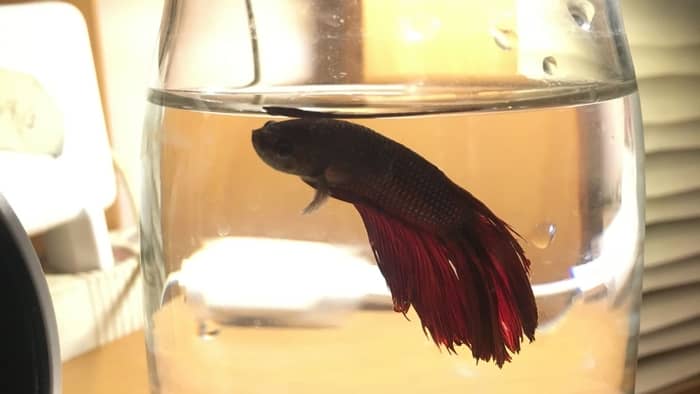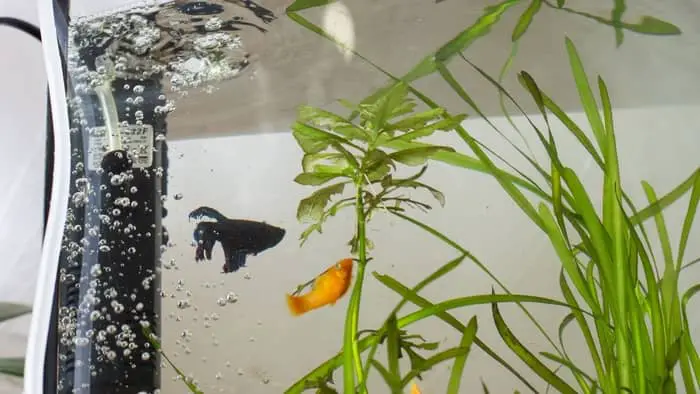Last Updated on June 4, 2022 by admins
Learn how to save dying fish after a water change.
Regular cleaning and maintenance of your aquarium tank are essential for its long-term success. There is almost no aquarist (especially a beginner) who has not made a big water change, left the tank pristine for the fish to enjoy, and woke up to fish dropping like flies the next day. – Is there anything sadder than that?
So, in this article, we will discuss how to save dying fish after a water change, and how to avoid this experience in the future.
What Happened In The First Place?
In order to give you the answer to the question “how to save dying fish after a water change”, we need to clarify why this accident happened at all.
Namely, large or infrequent changes in aquarium water can really kill your aquatic inhabitants. Water changes are beneficial to your pets, but you need to perform them properly. In the end, you can be guided by one thought, if your aquarium fish die after a water change it is probably related to a sudden shift in water parameters.
Aquarium pets can cope very well with gradual changes in water and environmental parameters. However, changing a large portion of aquarium water has a sudden and significant impact on water parameters. Due to sudden changes, your fish usually fails to adapt, is exposed to great stress, and eventually dies.
Accordingly, experts advise regular, partial water changes to provide your pets with everything they need for long and healthy life.

How To Save Dying Fish An After Water Change
If you notice unusual patterns in your fish’s behavior after a water change, it’s time for an emergency intervention.
Here are some of the most common symptoms that can indicate that something is wrong with your aquarium tank:
- In case your fish is gasping for the air at the surface, it could be due to a sudden temperature change.
- If you notice that the fins are clamped, and the fish is sitting at the bottom you most likely have a problem with increased ammonia levels in your aquarium tank.
- If your pet is twitching, rolling on its side, losing its buoyancy, and its gills are turning red, watch out because these are the most common symptoms that indicate high doses of chlorine in the tank.
Read below how to save dying fish after a water change.
Check the Water Temperature
Checking the water temperature is the first thing you should do if you notice something going on in your aquarium tank. If the water is too hot, the oxygen levels will drop, and the pets will probably suffocate. On the other hand, if the water is too cold, it will compromise the fish’s immunity which will most likely lead to various diseases and cause acute stress.
Don’t try different DIY ideas, like using ice cubes or packs to cool the water, as they can have dramatic effects quickly. Instead, use a fan or air conditioner in the room where your aquarium is located or rely on a heater to gradually increase the temperature.

Test pH, Ammonia & Nitrite Levels
The pH levels are one of the most common things people mess up when they change the water. In most cases, this can go unnoticed, but there are still situations where you end up typing queries like “how to save dying fish after a water change?”
Sudden changes in the pH of your aquarium water can cause eye damage, hyperplasia (thickening of gills and skin), skin burns, and labored breathing, and in addition, your fish can become unable to dispose of metabolic wastes.
Ammonia poisoning happens when a fish tank’s ph levels become elevated, offsetting the nitrogen cycle, and it mainly causes damage to the brain, organs, and the central nervous system of your aquarium pet.
Furthermore, nitrite poisoning almost always accompanies ammonia poisoning, and if your pets are exposed to even the lowest concentrations of nitrite for extended periods, it can do tremendous damage to their immune system. As a result, they become vulnerable to a multitude of different diseases such as fin rot, ich, and bacterial infections.
Another answer to the question “how to save dying fish after water change” is – to test the pH, ammonia, and nitrite levels of your aquarium water.
Related article The Best Freshwater Aquarium Test Kit
Dechlorinate The Aquarium Water
If by any chance, you didn’t forget to or didn’t dechlorinate the tank water enough, it can have devastating consequences for your aquarium pet. Unfortunately, chlorine poisoning is deadly in most cases because chlorine destroys living cells. As a result, your fish suffer from various respiratory diseases and can suffocate to death.
Thoroughly Check the Air Pump
This is the last answer to the question “how to save dying fish after a water change?” Always take care of your air pump because if it is turned off or not working properly, the fish will most likely become lethargic and lose its appetite.
In Conclusion
These are basic but very useful tips on how to save dying fish after a water change. To save a dying fish after a water change, it is essential to test the pH, ammonia, and nitrite levels of your aquarium water.
After all, the water change is supposed to improve the quality of life of your aquatic pet, rather than take away from it.
Have you ever encountered this type of problem? Write us your answers in the section below. We are expecting you.
You might like Fluval LED Edge Aquarium Kits, Are They Really Worthy Of Fame?
FAQs
Can A Stressed Fish Recover?
In most cases, especially if it is a mild form, your fish can recover from stress.
How Long Will Fish Die After A Water Change?
No fish may die from a water change! However, if something went wrong, your fish can die almost immediately after a water change.
How Do You Destress A Fish After A Water Change?
Here are the basic steps to destress your fish:
Ensure that the habitat has optimal pH, nitrate, and ammonia levels.
Check that the filtration system is working.
Check your pet's physical condition (skin and fins for fading colors or small white specks).
Try some of the stress coat products.
Reduce crowds in the aquarium.
Provide additional oxygen to your tank.
Why Are My Fish Acting Weird After A Water Change?
The unusual behavior of your pets after a water change is the first sign that something is wrong. You may have a problem with water temperature, or there may be sudden changes in pH, ammonia, and nitrite levels.